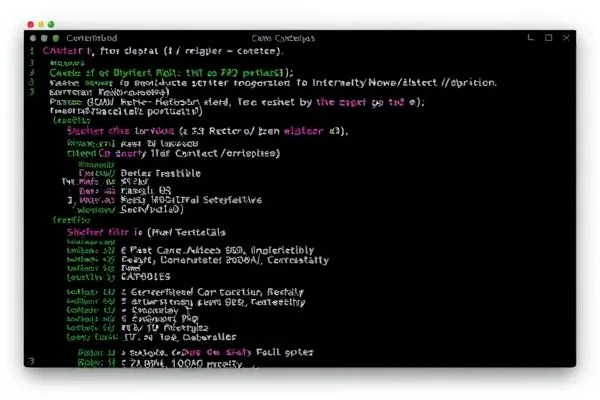In today’s rapidly changing digital world, organizations face an ever-increasing array of cybersecurity threats that exploit software vulnerabilities. Understanding and addressing these threats is pivotal for organizations committed to safeguarding sensitive data. This article provides an in-depth exploration of current cybersecurity threats, relevant vulnerabilities, and actionable strategies for enhancing defenses.
Takeaways:
- ✅ Cyber threats are evolving; staying informed is crucial for defense.
- ✅ Unpatched vulnerabilities provide an open door for attackers.
- ✅ Strategic implementation of Zero Trust can bolster security.
- ✅ Continuous education on social engineering is essential for employees.
Current Landscape of Cybersecurity Threats
The ongoing wave of cyber incidents emphasizes the importance of maintaining a robust cybersecurity posture. An example highlighted in recent reports involves the successful exploitation of CVE-2025-22457 in Ivanti Connect Secure. This critical vulnerability enabled cybercriminals, such as the group UNC5221, to deploy destructive malware strains, including TRAILBLAZE and BRUSHFIRE. This situation underscores how unaddressed vulnerabilities can lead to severe consequences for organizations. Maintaining an effective patch management strategy is paramount in order to mitigate such risks.
Additionally, incidents like the PAT theft from the SpotBugs open-source project demonstrate the cascading risk that unpatched vulnerabilities pose. This breach resulted in multiple repository compromises, showcasing the interconnected risks within software supply chains. Organizations must engage in proactive vulnerability assessments and prioritize software security in applications they develop or consume.
To combat these trends, relying on current threat intelligence reports can aid organizations in staying abreast of emerging vulnerabilities and the latest threat tactics. Furthermore, consistent penetration testing can help identify security gaps before malicious actors can capitalize on them. As credential theft remains a prevalent attack vector, organizations should place a strong emphasis on protecting sensitive data. For further guidance on preventing identity-based threats, refer to this resource: Effective Strategies to Prevent Identity-Based Cyber Attacks.
Enhancing Security with Zero Trust Architecture
In response to these evolving threats, many organizations are embracing Zero Trust as a vital security framework. The Zero Trust model articulates the principle of “never assume, always verify,” mandating robust verification for every user and device accessing the network environment. This approach acknowledges that both external and internal challenges may emerge.
Integrating Zero Trust principles allows organizations to reduce their risk exposures significantly. Solutions like Zscaler’s Zero Trust can aid in the protection of sensitive information from various risk vectors, including information leakage through misconfigured settings. Given the evolving nature of cyber threats, organizations must reevaluate legacy security measures like firewalls and VPNs that may prove inadequate against sophisticated techniques. Zero Trust ensures every access request is thoroughly examined, maintaining the integrity of the network.
To further strengthen this security posture, organizations should also implement advanced Identity and Access Management (IAM) systems. Incorporating multifactor authentication (MFA) and conducting regular reviews of user access rights will enhance defenses while identifying malicious behavior. Leveraging a Zero Trust framework ultimately fosters a security-conscious culture suited to combating modern threats.
Conclusion
As cyber threats evolve, organizations must adopt proactive, informed strategies to mitigate risks. Addressing unpatched vulnerabilities and investing in frameworks like Zero Trust will strengthen their cybersecurity posture significantly. Prioritize vigilance and adapt security practices to safeguard sensitive information against emerging threats. An unwavering commitment to security is essential; your organization’s security begins with ongoing awareness and preparedness.
FAQs:
- 1. What steps can organizations take to identify potential system breaches?
- 2. How can an organization effectively transition to a Zero Trust model?
- 3. Why is it crucial to keep software up-to-date for cybersecurity?
- 4. What methods can be utilized to train employees against social engineering attacks?









